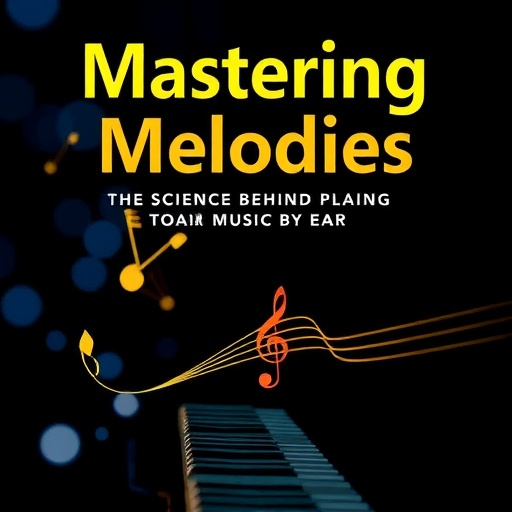Learning to play music by ear has long been recognized as a crucial skill for musicians, and for many, this task presents significant challenges. Musicians must develop a deep auditory understanding, which involves identifying pitches, rhythms, and melodies all from the sounds they hear without the aid of written music. Traditional music education often emphasizes reading from sheet music, which can sideline the importance of ear training. Recent research conducted by a team at the University of Waterloo highlights innovative strategies that might assist musicians-in-training in enhancing their ear training skills, especially in our digital age.
The study, guided by Christopher Liscio, a computer science graduate student from Waterloo, delves into the various facets of how music learning technology can support ear training. To gather insights, the research team meticulously analyzed an array of YouTube videos specifically tailored for teaching how to play music by ear. The investigation scrutinized the instructional methods employed by these content creators and assessed their effectiveness in improving viewers’ ability to recall melodies and notes. One of the most striking discoveries from this research was the apparent underutilization of existing digital tools designed for enhancing ear training.
Despite the availability of technology that can loop playback, modify speed, and provide varied auditory experiences, many musicians seem to overlook these features in their learning processes. This oversight raises important questions about the suitability of currently available tools and whether they are meeting the actual demands and needs of budding musicians. Liscio noted that although there are many apps and digital resources to assist with ear training, musicians often fail to leverage these tools effectively, which begs the question of how these tools can be improved or adapted to better serve their intended purpose.
The research team focused on analyzing 28 YouTube lessons that emphasized ear learning, categorizing instructional styles to understand what methods worked best for knowledge retention. Surprisingly, the findings revealed a notable trend: many content creators and their audiences did not incorporate fundamental digital music learning features, such as looping and playback speed adjustment, into their practice. This unmet potential suggests that not only educators but also students may not fully understand the available resources at their disposal and how to utilize them effectively.
As they evaluated the teaching methods echoed in the videos, the researchers recognized a broader issue within the traditional structure of music education. They began this project with a specific goal to build a new tool for ear learners, only to realize mid-research that creating a product without first comprehending the users’ real needs could lead to ineffectual solutions. This epiphany underscored the importance of using platforms like YouTube, not just for music instruction but as a research resource to gain insights into the mechanics of ear learning.
Additionally, the study also emphasizes the need for novel methodologies for teaching music by ear. Traditional methods often favor a one-size-fits-all approach, which may not cater to diverse learning styles prevalent among musicians. By drawing upon the real-life practices observed in instructional videos, researchers can develop tailored solutions informed by how actual musicians engage with music learning technology. This includes encouraging the exploration of smaller musical segments, emphasizing repetitive playback of challenging notes, and allowing for more interactive approaches to memorization.
Another significant aspect of the research focuses on the psychological and cognitive facets of ear learning. Identifying musical subsequences to memorize can greatly enhance a student’s ability to process and recall music. Breaking down complex melodies into manageable sections enables novice musicians to gradually build their confidence and competence. This technique, when coupled with memory-enhancing playback features, can transform how aspiring musicians approach learning.
The findings have implications not only for amateur musicians but also for educators and developers of music learning software. By highlighting the effectiveness and advantages of adaptive technology, researchers hope to encourage a shift in how technology is utilized in music education. This could lead to a more collaborative effort among technologists, educators, and content creators to provide tools that genuinely meet the needs of students, making learning by ear an accessible and fruitful endeavor.
As digital platforms continue to expand and transform educational landscapes, the importance of ear training is ever more relevant. With the influx of easily accessible teaching materials and technological advancements, emerging musicians have the potential to enrich their skills in ways that were once unimaginable. The research from Waterloo ultimately seeks to bridge the gap between technology and ear learning by proving that a well-structured approach to instruction can create an effective learning path for prospective musicians.
The culmination of this research, titled “Helping popular musicians learn by ear: Analyzing video lessons to inform the design of memory-oriented human-recording interactions,” will be presented at the ACM International Conference on Tangible, Embedded, and Embodied Interaction. The work not only contributes to the academic community but also opens pathways for a new era of music education enriched by technology.
By embracing effective teaching methodologies and leveraging current technologies better, future musical talent can be nurtured, empowering more individuals to learn how to play music by ear with confidence and proficiency.
Subject of Research: The effectiveness of music learning technology in teaching musicians to learn by ear.
Article Title: Helping popular musicians learn by ear: Analyzing video lessons to inform the design of memory-oriented human-recording interactions
News Publication Date: (Not stated in the provided content)
Web References: University of Waterloo
References: DOI: 10.1145/3689050.370495
Image Credits: (Not stated in the provided content)
Keywords
Music, Artificial Intelligence, Ear Training, Digital Learning, Education Technology.
Tags: analyzing YouTube music tutorialsauditory skill developmentchallenges in music learningdigital tools for musiciansear training techniqueseffective teaching methods for ear trainingenhancing musical memoryimportance of pitch and rhythm recognitioninnovative music education strategieslearning music by eartraditional vs modern music education methodsUniversity of Waterloo music research





